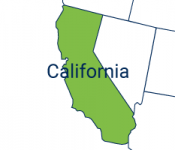Part of owning and driving a car is paying for all the expenses that go along with it. There are some costs that have little variation, like a car payment or insurance. One of the most variable costs that a driver can control is the gas budget. Each vehicle has a specific gas mileage estimate that is given when it is manufactured that is influenced by other factors. If you are looking to improve the gas mileage in your car, consider making some of these changes.
- Accelerate Slowly. When the light turns green, are you the type of driver that slams on the gas? If yes, this will burn up a lot of gas over time. Instead, accelerate slowly to gradually use the gas and extend the life of the fuel in the car.
- Brake slowly. Pushing on the gas pedal and then needing to brake quickly burns up all the gas in the system without using it. Instead, do not push the gas pedal and let the vehicle slow down naturally as long as it is safe before braking.
- Keep tires properly inflated. Physics show that slack on the tire can slow the car down, giving it a bit of drag. When the tires are properly inflated, the surface area on the ground is optimal for driving and getting more roll. The amount of tread on the tire can also make a big difference since manufacturers try to give a good grip on the road while also allowing it to not slow down the vehicle.
- Use the right fuel. When manufacturers test drive vehicles and determine gas mileage, they use the most premium type of fuel for the car. If you still have the owner’s manual in the car, it should say what the recommended fuel type is for gas mileage and optimal performance.
- Avoid idling. One of the worst things for burning up gas is idling. Whether you are sitting in traffic not moving or just your driveway, try to limit the amount of time spent idling. This uses gas but does not contribute to miles driven, decreasing the amount of mileage you get from your tank of gas.
- Limit stopping and going. Choosing a route that has a lot of stop signs, intersections, tolls, or construction can mean you are stopping and starting a lot. This uses up more gas than if you were to find a route that allows you to keep driving once you are going, like a freeway. Use a little planning by looking ahead for the best routes or adjust the settings on your GPS unit.
- Use Cruise Control. Driving for long stretches of street can involve a lot of increasing and decreasing of speed. As mentioned before, the best way to increase mileage is to keep the car moving once it is rolling. Using the cruise control setting keeps the car moving at an optimum pace without the driver paying as much attention to speeding up and slowing down.
Being aware of small changes can help a driver pay more attention to their overall driving. Developing better driving habits helps improve driver safety and extend the life of the vehicle too. Using less gasoline is also great for the planet and the wallet. Getting better gas mileage might only save a few dollars at the pump, but over time, those savings add up to make a big difference. When a driver uses all these tips, they become a more responsible driver overall.




